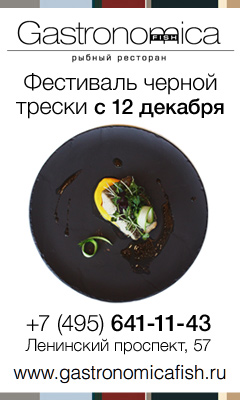Wholesale prices for salmon roe, which had soared by 70 percent this summer due to a downfallen beginning of the salmon fishing season, have rolled back and may go down even more. A number of processors have purchased almost 1,500 tons of frozen salmon roe in the USA; the roe is offered at the Moscow wholesale market at the price of 800-900 rubles per kilo, while the average price is 1,200-1,300 rubles per kilo.
The average wholesale salmon roe price in Kamchatka by the end of September amounted to 1,500-1,700 rubles per kilo, according to Federal Fishing Agency. “The salmon roe value has almost come back, the aggregate increase has not exceeded 10 percent”, says Alexander Saveliev, spokesman of Rosrybolovstvo. As Kommersant wrote on July 22, due to a downfallen beginning of the salmon fishing season, the wholesale salmon roe prices in Kamchatka region, which provides for 40-60 percent of salmon roe production, had soared by almost 70 percent, up to 2,100-2,500 rubles per kilo. “By the middle of the fishing season the volume of salmon harvest has increased and now almost reached 400 thousand tons. The market will receive about 15-16 thousand tons of salmon roe, which is enough to satisfy the domestic demand”, says Mr. Saveliev explaining the reasons for the drop in prices. According to Mr. Saveliev, in September the market received a large volume of salmon roe, primarily from Sakhalin, where the fishing season was successful. However, in central Russia the average wholesale prices for salmon roe range from 1,200 to 1,300 rubles per kilo, which is lower than in Kamchatka. Large processors say that the prices dropped because of the increased import of roe in skeins or frozen roe from the United States.
According to the Federal Customs Service, as of August the volume of such imported roe worth more than $13 million almost reached 1,500 tons. The declared customs value of 89 percent of the salmon roe was $7-9 per kilo. “In Moscow the wholesale price for this roe is 800-900 rubles per kilo. The customs clearance price conveys the suggestion that this is either the last year’s stock since the fresh roe price at actions this year is $18-25 per kilo, or the importers have underestimated the customs value and the government has not received 170 million rubles as duties and VAT”, indignantly remarks Alexander Saveliev.
The annual output of processed packaged salmon roe in Russia is 11-13 thousand tons, which is 28.6-30 billion rubles per year (at processors’ prices including VAT).
The market participants believe that such situation results from the conflict between the processors from the central region and the Far East. Herman Zverev, head of the Fishery and Aquiculture Commission of the Russian Union of Industrialists and Entrepreneurs, told Kommersant that Kamchatka and Sakhalin producers had put into operation a large number of on-site processing plants and facilities, having considerably reduced the volume of supply of green salmon roe to the processors in the Central Federal Region (CFR). “If earlier producers had to sell at least 30-35% of green salmon roe on the price terms offered by the processors from the European part of Russia, now they can dictate terms to the processors”, remarked the expert.
This is confirmed by the statistical data: in 2010-2011 deliveries of green salmon roe to the European part of Russia amounted to about 4,000 tons per year. In 2012 this volume went down to 1,500 tons. “Processors in the Central Federal Region had nothing to do but purchase salmon roe from abroad, all the more so at a lower price. Judging by the volume of import, they have just made up for the lack of green salmon roe”, assuredly said one of the representatives of the industry.
But the conflict may have more serious consequences both for the producers and processors and the industry as a whole. The experts of the Russian Federal Research Institute of Fisheries and Oceanography (VNIIRO) said that in Alaska, as well as in Russia, the catch was low in the beginning of the salmon fishing season, but at the end the situation has improved, and as a result Alaskan fishermen managed to catch about 600 thousand tons of pink salmon alone, which will provide an average roe output of about 24 thousand tons. “Since the demand for salmon roe in the United States is scanty, significant volumes of salmon roe will be exported, including export to Russia”, believes Mikhail Glubokovsky, Director of VNIIRO. According to the expert, this means that the salmon roe price may go down even more, and therefore neither producers nor processors would be able to get a decent margin.
Source: Svetlana Mentiukova, Kommersant Newspaper
